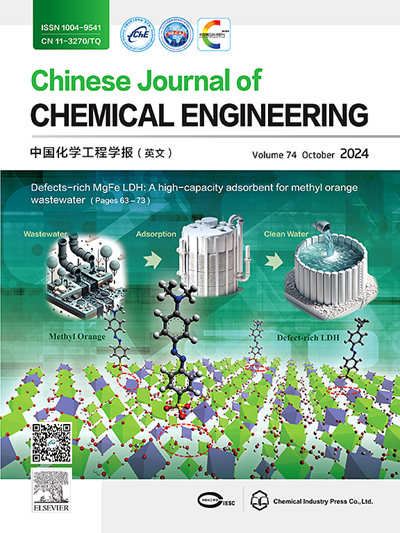Investigation of the formation processes of CO2 hydrate films on the interface of liquid carbon dioxide with humic acids solutions
IF 3.7
3区 工程技术
Q2 ENGINEERING, CHEMICAL
引用次数: 0
Abstract
Morphology and growth rate of carbon dioxide hydrate on the interface between liquid carbon dioxide and humic acid solutions were studied in this work. It was found that after the growth of the hydrate film at the interface, further growth of hydrate due to the suction of water in the capillary system formed between the wall of the cuvette and the end boundary of the hydrate layer occurs. Most probably, substantial effects on the formation of this capillary system may be caused by variations in reactor wall properties, for example, hydrophobic-hydrophilic balance, roughness, etc. We found, that the rate of CO2 hydrate film growth on the surface of the humic acid aqueous solution is 4-fold to lower in comparison with the growth rate on the surface of pure water. We suppose that this is caused by the adsorption of humic acid associates on the surface of hydrate particles and, as a consequence, by the deceleration of the diffusion of dissolved carbon dioxide to the growing hydrate particle.
液态二氧化碳与腐植酸溶液界面上CO2水合物膜形成过程的研究
研究了二氧化碳水合物在液态二氧化碳与腐植酸溶液界面上的形态和生长速率。研究发现,在界面处水合物膜生长后,由于水在试管壁与水合物层端界之间形成的毛细体系中被吸力而进一步生长。最有可能的是,对毛细管系统形成的实质性影响可能是由反应器壁性质的变化引起的,例如疏水-亲水平衡、粗糙度等。我们发现,腐植酸水溶液表面CO2水合物膜的生长速率是纯水表面生长速率的4倍甚至更低。我们认为,这是由于腐植酸在水合物颗粒表面的吸附引起的,因此,溶解的二氧化碳向生长的水合物颗粒扩散的速度减慢。
本文章由计算机程序翻译,如有差异,请以英文原文为准。
求助全文
约1分钟内获得全文
求助全文
来源期刊

Chinese Journal of Chemical Engineering
工程技术-工程:化工
CiteScore
6.60
自引率
5.30%
发文量
4309
审稿时长
31 days
期刊介绍:
The Chinese Journal of Chemical Engineering (Monthly, started in 1982) is the official journal of the Chemical Industry and Engineering Society of China and published by the Chemical Industry Press Co. Ltd. The aim of the journal is to develop the international exchange of scientific and technical information in the field of chemical engineering. It publishes original research papers that cover the major advancements and achievements in chemical engineering in China as well as some articles from overseas contributors.
The topics of journal include chemical engineering, chemical technology, biochemical engineering, energy and environmental engineering and other relevant fields. Papers are published on the basis of their relevance to theoretical research, practical application or potential uses in the industry as Research Papers, Communications, Reviews and Perspectives. Prominent domestic and overseas chemical experts and scholars have been invited to form an International Advisory Board and the Editorial Committee. It enjoys recognition among Chinese academia and industry as a reliable source of information of what is going on in chemical engineering research, both domestic and abroad.
 求助内容:
求助内容: 应助结果提醒方式:
应助结果提醒方式:


